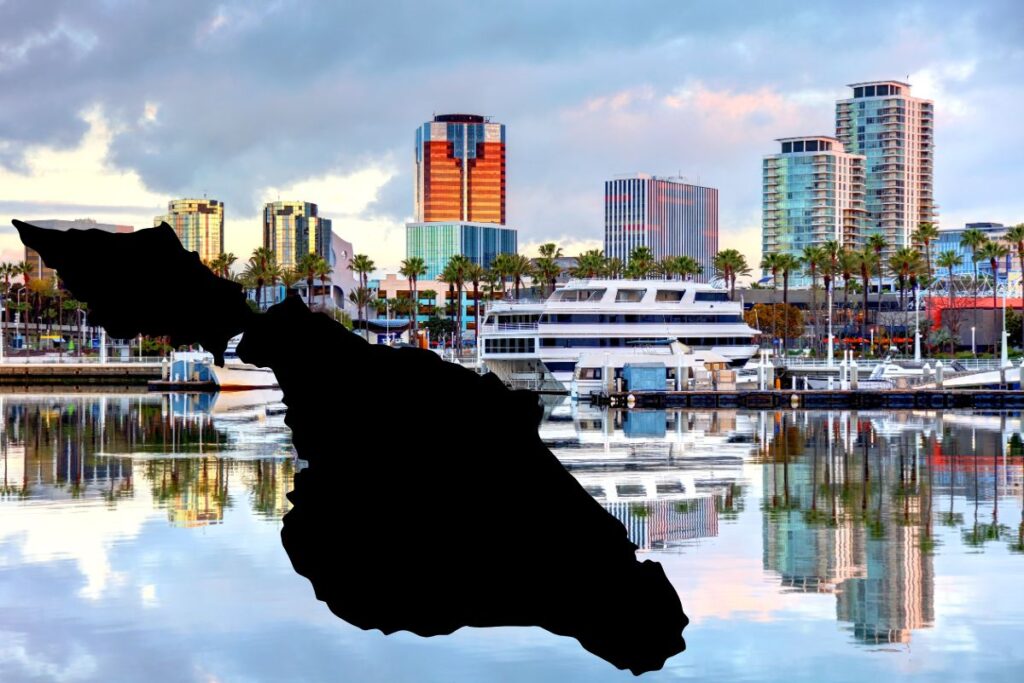
For Southern California travelers seeking a quick island getaway, the Catalina Express ferry service from Long Beach to Santa Catalina Island is one of the most popular options. Not only is it convenient, but it also comes with a wealth of interesting statistics that highlight the efficiency and scope of operations between these two destinations. Below, we dive into the data that fuels this well-traveled route.
Location and Distance
- Departure Point: Long Beach, California (Catalina Landing, near the Aquarium of the Pacific)
- Arrival Point: Avalon, Santa Catalina Island
- Approximate Distance: 22 miles (35 km) across the Pacific Ocean
Although Santa Catalina Island is only about 22 miles offshore, the ferry crossing provides the feel of a true open-water voyage, putting travelers in a picturesque maritime setting.
Travel Time and Frequency
- Average One-Way Crossing Time: 60 to 75 minutes
- Frequency of Departures (High Season): Up to 8 round trips daily from Long Beach
- Frequency of Departures (Off-Peak Season): Typically 2 to 4 round trips daily from Long Beach
Most Catalina Express crossings to Avalon from Long Beach are scheduled to align with peak tourism periods. During summer or holidays, expect more frequent ferry times and additional special event sailings.
Vessel Information
- Fleet Size: Catalina Express operates a fleet of 8 high-speed vessels (across all Southern California departure ports).
- Capacity Range per Vessel: 149 to 450 passengers depending on the boat model.
- Average Speed: Approximately 28 knots (about 32 mph or 52 km/h) in favorable conditions.
Catalina Express introduced high-speed catamarans in the early 1980s, revolutionizing the crossing with reduced travel time. These vessels are designed for safety and comfort, featuring stable hull designs to handle a variety of sea conditions.
Passenger Statistics
- Annual Passengers Carried (All Routes): Over 1 million people annually (in pre-pandemic years).
- Cumulative Ridership Since 1981: More than 33 million passengers have traveled with Catalina Express (across all departures, including Long Beach, San Pedro, and Dana Point).
While exact yearly figures vary depending on tourism trends, Long Beach remains the busiest of Catalina Express’s three mainland departure points, often hosting the lion’s share of total riders.
Ticketing and Fare Data
- Round-Trip Adult Ticket: Generally starts around $76 – $85 (depending on promotions, seasonal demand, and travel class).
- Children (2-11) Round-Trip: Typically around $60 – $70
- Baggage Allowance: 2 pieces of luggage (up to 50 lbs / 22.7 kg each) and 1 carry-on item per passenger.
- Upgrade Options: Passengers can opt for the Commodore Lounge or the Captain’s Lounge for an additional fee, receiving priority boarding, complimentary beverages, and upgraded seating.
Fares may be adjusted for off-season, holiday periods, or special events. It’s recommended to book online in advance through our booking platform to confirm current prices and schedules.
Economic and Tourism Impact
- Tourism Revenue Contribution: Visits to Catalina Island bring in an estimated $166 million annually for the local economy (including lodging, dining, and activities island-wide).
- Employment: Ferry operations support hundreds of direct and indirect jobs, from onboard crew to ticketing agents, as well as further economic benefits for hotels, restaurants, and tour operators in Avalon.
Catalina Island’s hospitality industry heavily depends on ferry connectivity from the mainland. Long Beach is often the “front door” to the island, making this route crucial for stable tourism flows.
Environmental Notes
- Fuel Efficiency Measures: Catalina Express has invested in modern engines with cleaner emissions and smoother rides compared to older ferry models.
- Conservation Initiatives: Catalina Island itself is home to the Catalina Island Conservancy, which oversees the conservation of 88% of the island’s land. Sustainable tourism initiatives and efficient ferry operations help maintain the island’s ecological balance.
Travelers can take pride in the fact that Catalina Express continues to adopt technologies to minimize its environmental footprint while providing essential transport to the island.
Key Takeaways
- Rapid Access: An average 1-hour crossing from Long Beach makes Catalina one of Southern California’s most accessible island getaways.
- High Passenger Volume: Over 1 million passengers cross to Catalina (on all routes combined) each year, with Long Beach being the busiest port.
- Economic Booster: Trips via Long Beach contribute significantly to the island’s overall tourism revenue.
- Modern Fleet: High-speed catamarans offer comfortable, quick, and more eco-friendly journeys compared to older vessels.
If you’re planning a Catalina adventure, the Long Beach connection via Catalina Express offers a convenient, efficient, and data-rich passage—from the speedy vessels to the notable impact on local tourism. Whether it’s a day trip or an extended stay, these numbers illustrate the vital role that the Long Beach–Avalon route plays in keeping the island vibrant and connected.
